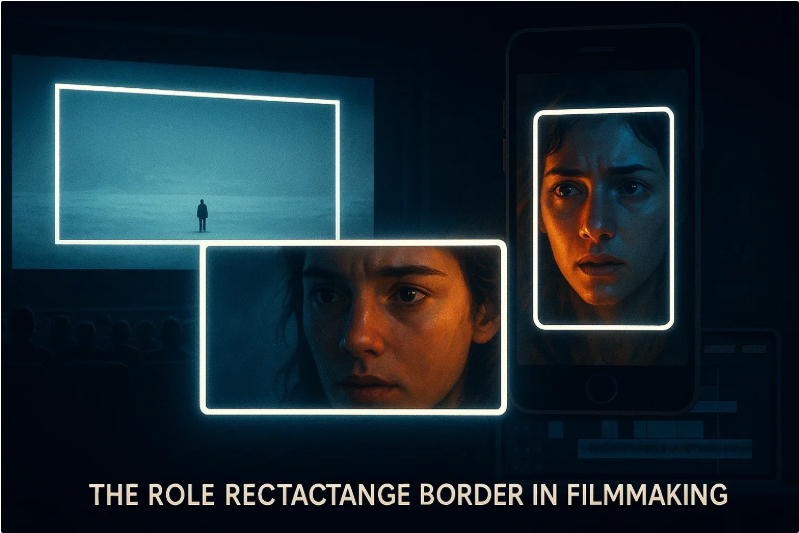Rectangle bolder footage is a concept that’s gaining significant traction in the world of design and filmmaking. But what exactly does it mean, and why should you care about it? In this article, we will dive into the practical applications, real-life examples, and fun facts that make rectangle bolder footage a valuable tool in the creative industry.
What is Rectangle Bolder Footage?
Rectangle bolder footage refers to the use of a specific rectangular aspect ratio in visual design and filmmaking that emphasizes bold, striking compositions. Think of it as a frame within a frame, but with a deliberate and distinct shape that stands out in a crowded visual world. This technique plays with the geometry of the frame, creating an impactful visual experience that resonates with the viewer.
At its core, rectangle bolder footage focuses on the geometry of a rectangle and how it can be manipulated within a video or graphic design project to highlight key elements. It’s a design choice that demands attention, and it’s used to bring a sense of structure, focus, and often, drama, to a scene or a layout.
The Role of Rectangle Bolder Footage in Filmmaking

Rectangle bolder footage isn’t just a creative choice in filmmaking—it’s a tool used to elevate the visual narrative. By manipulating aspect ratios and framing, filmmakers can control how the audience experiences a scene, from creating tension to highlighting key details within the frame.
From a visual perspective, rectangle bolder footage can emphasize certain emotions. For instance, a wide rectangular frame can evoke isolation, making a character appear small against a vast landscape. It also works practically, allowing filmmakers to tailor footage for different formats, such as theatrical releases or digital platforms.
Try out Ring Square Footage Calculator
Enhancing Shots with Rectangle Bolder Footage
-
Wide Shots
A wider rectangle captures expansive landscapes, enhancing a sense of grandeur or isolation. It's a technique used in epic scenes to add drama, like in Lawrence of Arabia. -
Close-Up Shots
When used in close-ups, rectangle bolder footage can focus attention on characters or objects, amplifying tension or intimacy. - Tracking Shots
Moving shots framed in a rectangular aspect ratio can make a sequence feel more dynamic, adding excitement or suspense to action scenes.
Famous Examples of Rectangle Bolder Footage in Movies
-
Wes Anderson’s The Grand Budapest Hotel (2014)
Anderson shifts aspect ratios to differentiate between past and present, using a 1.37:1 ratio for flashbacks and a 2.35:1 ratio for modern-day scenes. This change creates a visual contrast, adding depth to the story. -
Christopher Nolan’s The Dark Knight (2008)
Nolan used IMAX cameras and a 1.43:1 aspect ratio for certain scenes, particularly action shots. The wider frame gives these sequences a larger-than-life feel, emphasizing scale and intensity. - Ridley Scott’s The Martian (2015)
The wide 2.39:1 ratio highlights the vast, barren landscape of Mars, enhancing the sense of isolation and survival, as Mark Watney struggles alone on the planet.
Try out Sector Square Footage Calculator
How to Calculate Rectangle Bolder Footage
Calculating rectangle bolder footage involves understanding the relationship between the frame’s width and height, which is defined by the aspect ratio. This is essential for filmmakers, graphic designers, or anyone working with visual content to ensure the proper framing and composition of their work.
Step 1: Determine the Aspect Ratio
The first step in calculating rectangle bolder footage is selecting the aspect ratio you want to work with. The aspect ratio is the ratio of the width of the frame to its height. Common aspect ratios include:
-
16:9 (widescreen)
-
4:3 (traditional TV)
-
2.35:1 (cinematic)
For example, if you're working with a 16:9 frame, the width is 16 units, and the height is 9 units.
Step 2: Measure the Dimensions
Once you've selected the aspect ratio, you need to measure the width and height of your frame or footage. If you're working with an existing video or image, these dimensions are typically provided in pixels or inches.
If you're working with a custom size, calculate the dimensions using the chosen aspect ratio. For instance, if you want a frame with a width of 1920 pixels and you're using a 16:9 aspect ratio, the height would be:
Height = (1920 ÷ 16) × 9 = 1080 pixels
Step 3: Adjust for Custom Frames
In some cases, you may want to create a custom rectangle bolder frame. If you’re working with a unique ratio, simply choose your desired width, then calculate the corresponding height. For instance, for a 2:1 ratio, where the width is 2000 pixels, the height would be:
Height = 2000 ÷ 2 = 1000 pixels
Step 4: Crop or Resize Your Content
Once you’ve calculated the dimensions, crop or resize your video or image to fit within the new frame. If the content doesn’t fit perfectly, you may need to adjust the composition or add black bars to maintain the aspect ratio.
Check out Math section to solve math quick and easy

